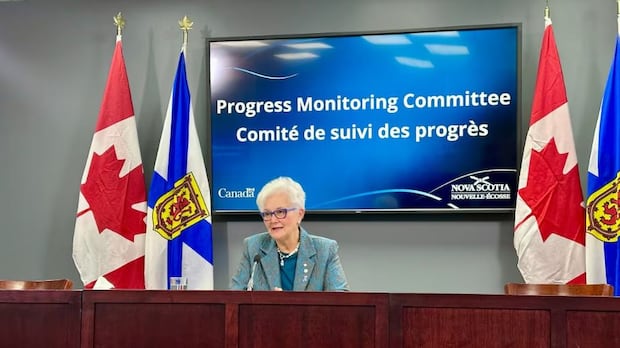No evidence of discrimination found in Halifax bridge case

The chair of an independent human rights board of inquiry has dismissed a racial profiling complaint against Halifax Harbour Bridges, the Halifax Bridge Commission and Commissionaires Nova Scotia, saying there was no evidence of discrimination.
Ross Gray, who is Black, was walking his bicycle across the Angus L. Macdonald bridge on July 17, 2021, when he says he was racially profiled. Two bridge patrol officers tracked him down and accused him of riding in the pedestrian lane.
A public hearing about the incident was held in April 2024 and a decision was made on Wednesday.
“In my view, race was not likely a factor in the officers’ decision to stop the complainant. The officers did not have a description of the cyclist who had been observed riding on the pedestrian walkway. The radio communication reveals that a decision to ‘go talk to him’ was made before there was any further visual of the cyclist,” chair Benjamin Perryman wrote in his decision.
Video surveillance showed Gray had not been riding his bike in the pedestrian lane. The bridge patrol officers had stopped him twice before they learned Gray was the wrong person. Gray was then free to go.
Within days of the incident, Halifax Harbour Bridges sent Gray a letter apologizing. In it, HHB said it was “human error” that led to Gray being stopped and that “counselling and administrative action” was taken with the staff involved.
HHB also ended up changing some of its standard operating procedures in light of the incident. It also invested in an upgraded surveillance system and radio system.
Harmful impact
Gray said the interaction had a very harmful impact on him that affected how he parented his child and changed his trust in the system.
He also continues to feel guarded, and has issues with going out in public, Perryman said.
“As the complainant explained: ‘Like it’s all still there. It’s just like it happened yesterday, right?'”
Perryman noted four reasons why he doesn’t think Gray faced racial discrimination in the incident:
- The bridge officers got verbal communication from their operations supervisor that they had stopped the right person, which Perryman noted “shows an open mind as to whether the complainant had committed an offence.”
- The bridge officers were given direction from their operations manager to put “greater heat and light on the situation” of cyclists riding on the pedestrian walkway. Perryman said this shows the officers were following directions they had been given.
- Even though one of the bridge officers spoke to Gray in a sharper tone during the second stop, Perryman said she “remained professional.” Perryman said sometimes peace officers have used a sharper tone “when engaging with the public and giving verbal directions.” Perryman noted the officer “was polite and courteous according to Mr. Gray; his real concern was with her decision to pursue and stop him, not with her demeanour.”
- When the correct cyclist was caught, Perryman said he was treated in the same way Gray was treated.
“All this leads the board to conclude that there was nothing abnormal, disproportionate, discourteous, or inexplicable about the officers’ conduct, including their decision to pursue the complainant and the way they interacted with him when he was stopped,” Perryman wrote.
“As such, the complainant has not established on a balance of probabilities that the officers’ second interaction with him was ‘based on’ his race or colour.”




